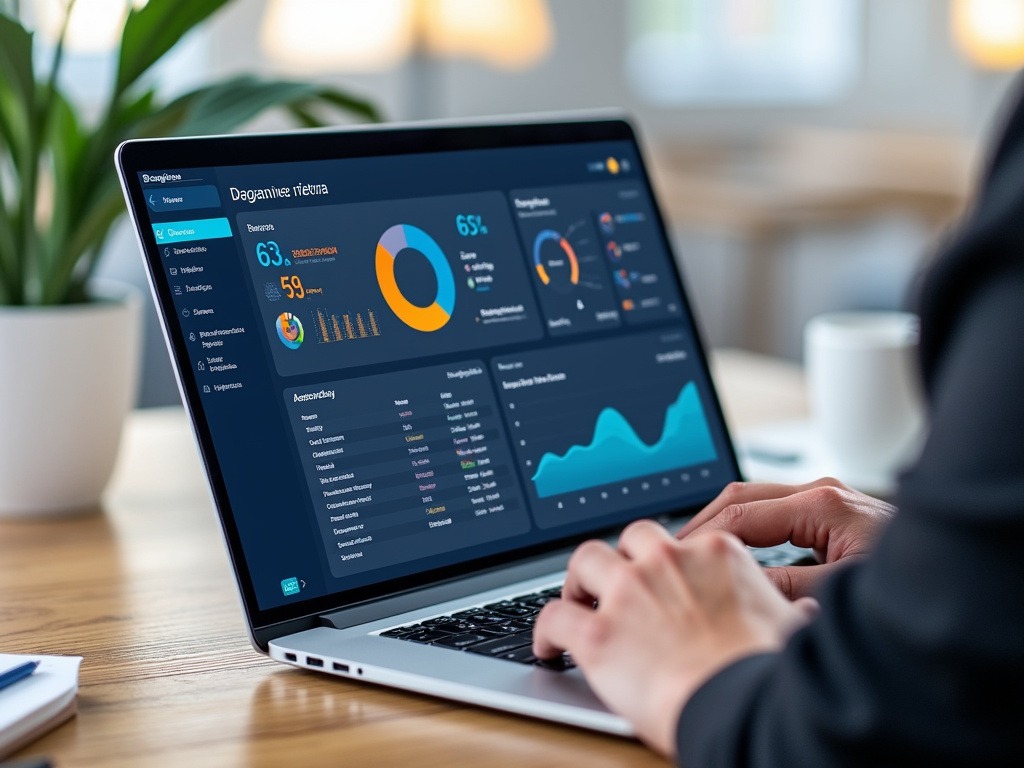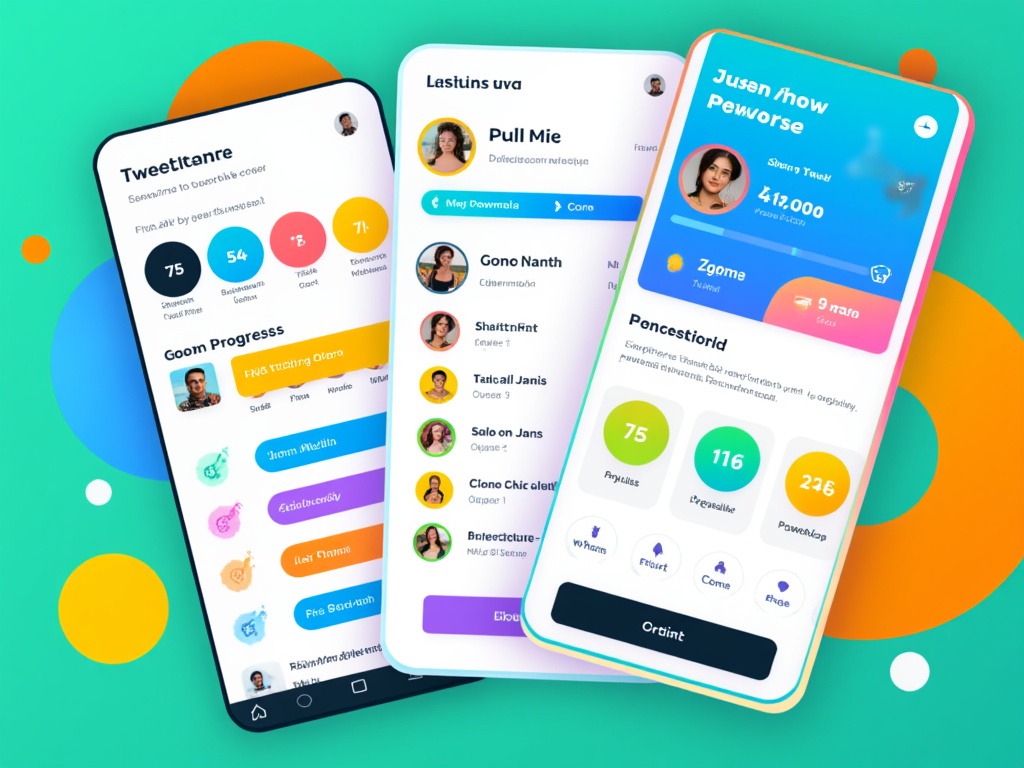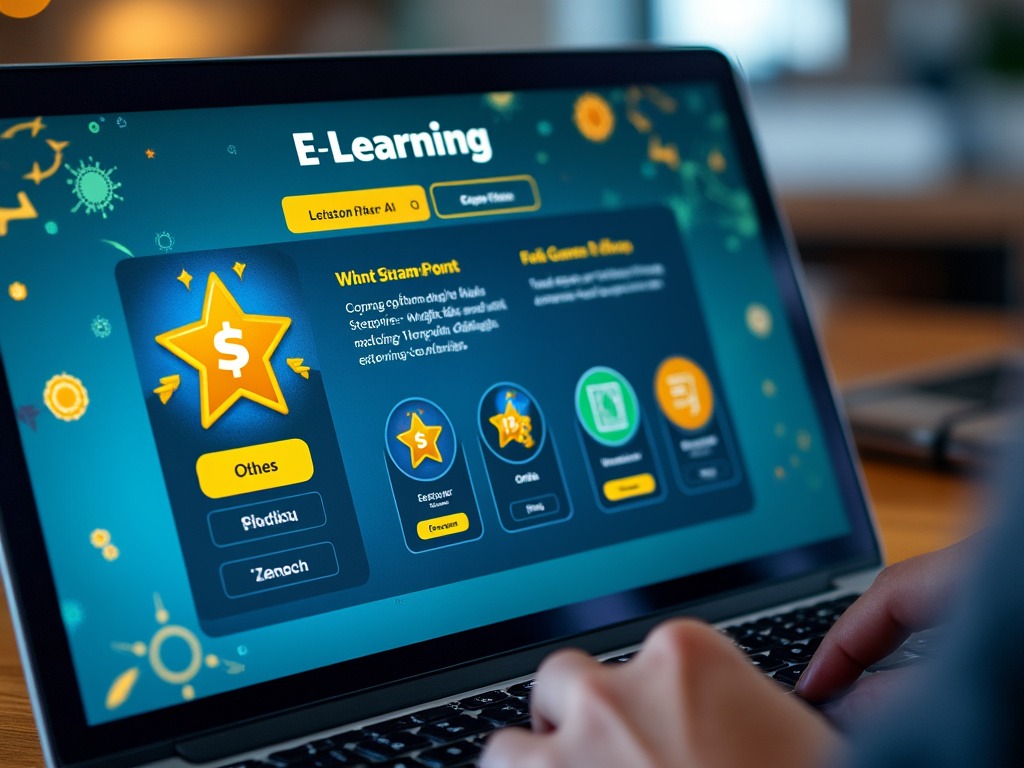In today’s fast-paced, highly competitive digital world, engaging users is paramount. Every business, whether a startup or a well-established enterprise, must focus on increasing user engagement to remain relevant. One of the most effective strategies to achieve this is gamification. By integrating game mechanics into non-game contexts, businesses can inspire action, drive motivation, and retain customers or employees. This comprehensive guide will delve deep into the world of gamification strategies and how they can transform your business by boosting user engagement.
What Are Gamification Strategies and Why Do They Matter for User Engagement?
Gamification refers to the process of incorporating game-like elements into business processes or digital platforms to increase user motivation and engagement. By utilizing game mechanics such as points, leaderboards, and rewards, companies can turn mundane tasks into interactive and enjoyable experiences, enhancing both customer and employee satisfaction.
In the context of user engagement, gamification offers an innovative approach to capture and maintain the attention of users. Whether through game-based learning, reward systems, or social gamification, the goal remains the same—enhance user participation and drive engagement through interactive and motivating techniques.
Gamified strategies play a crucial role in user retention and customer loyalty, both of which are essential for long-term business success. By implementing gamified design, you create a more interactive and immersive experience that keeps users coming back.
Understanding Core Game Mechanics for Gamification Success
At the heart of every successful gamification strategy is the use of well-designed game mechanics. These elements are essential in transforming regular activities into more engaging and enjoyable experiences.
Leaderboards, Points, and Badges: Tools for Engagement
Leaderboards, points, and badges are the cornerstone of many gamified platforms. These tools allow users to track their progress and compare their achievements with others, creating a sense of accomplishment and competition. Leaderboards foster healthy competition by displaying user rankings, motivating them to achieve higher positions.
Points are often awarded for completing tasks, making purchases, or simply interacting with the platform. Over time, users can accumulate points to unlock rewards, contributing to a sense of progression and satisfaction.
Badges and achievement systems act as virtual trophies, rewarding users for reaching specific milestones. These gamification elements can be incredibly effective for both customer engagement and employee motivation, giving users tangible rewards for their efforts.
The Power of Progress Tracking and Achievements
Progress tracking is another key mechanic in gamification. Whether it’s a progress bar or a series of levels, showing users their progress keeps them engaged and motivated to continue. Gamified platforms that track user progress can significantly improve retention rates by encouraging continuous participation.
Reward Systems: Creating Incentivized Engagement
A well-designed reward system can be one of the most powerful tools in your gamification strategy. Rewards—whether virtual badges, tangible rewards, or social recognition—create a loop of motivation that drives user engagement. The key is to find the right balance between extrinsic rewards (material incentives) and intrinsic rewards (satisfaction from accomplishing something).

How Psychology and Motivation Drive Gamified User Engagement
The success of gamification strategies hinges on a deep understanding of human psychology. By tapping into the underlying motivations that drive behavior, businesses can create gamified experiences that are more effective and engaging.
Intrinsic vs. Extrinsic Rewards in Gamification
One of the core principles in gamification is the distinction between intrinsic and extrinsic rewards. Intrinsic rewards come from within—the joy of solving a problem, the satisfaction of progress, or the pleasure of mastering a new skill. Gamification taps into these feelings by offering challenges, feedback, and progression systems that stimulate these internal rewards.
On the other hand, extrinsic rewards—such as money, prizes, or virtual badges—can be powerful motivators but should be used carefully. Too much reliance on extrinsic rewards can lead to users losing interest once the rewards are gone. The most successful gamified platforms combine both intrinsic and extrinsic rewards to maintain long-term engagement.
Applying Behavioral Science to Increase User Retention
Behavioral science offers valuable insights into how users behave and how to modify that behavior. Gamification leverages psychological triggers such as curiosity, competition, and reward to build habits around your platform. By implementing feedback loops, where user actions lead to immediate responses (such as points or badges), businesses can drive user engagement and foster loyalty.
Building Feedback Loops to Maintain Engagement
Feedback loops are crucial to any successful gamification strategy. These loops—where users receive instant feedback for their actions—help build a sense of accomplishment and keep users coming back. For example, earning points immediately after completing a task, or seeing progress toward a goal, provides positive reinforcement that drives continued engagement.
Successful Gamification Strategies for Business Engagement
Gamification has been successfully applied in a wide range of industries, from marketing and education to corporate training and customer retention. Below are several case studies that highlight the effectiveness of gamified experiences.
Gamified Marketing Campaigns that Boosted Customer Loyalty
One of the most common applications of gamification is in marketing. By adding gamified elements such as points, leaderboards, and rewards to marketing campaigns, businesses can boost customer loyalty and user retention. Take Starbucks, for example—their loyalty app allows customers to earn stars for every purchase, which can then be redeemed for free drinks or food. This not only encourages repeat purchases but also creates a sense of achievement for the customer.
How Companies Are Using Gamification to Drive Employee Engagement
Many companies are now turning to gamification to enhance employee engagement. By incorporating game mechanics such as progress tracking, leaderboards, and badges, businesses can motivate employees to reach their goals, collaborate with peers, and improve performance. Microsoft, for instance, used gamification to improve employee training, incorporating quizzes and leaderboards into their learning management system, which resulted in higher participation and completion rates.
Case Study: Mobile App Gamification for User Retention
Mobile apps are ripe for gamification. Take Duolingo, a popular language-learning app, as an example. By incorporating game-based learning elements like streaks, badges, and leaderboards, Duolingo has created a highly engaging platform that motivates users to learn daily. The gamified features make learning feel like a fun challenge rather than a chore, which keeps users coming back.

Enhancing Employee Motivation Through Gamification
Gamification has proven to be a powerful tool in the corporate world, particularly for improving employee engagement and motivation. By transforming work tasks into gamified experiences, businesses can improve performance, foster collaboration, and boost job satisfaction.
How Gamified Learning Increases Knowledge Retention
Incorporating game-based learning into corporate training programs can significantly improve knowledge retention. Gamified learning often involves quizzes, points, and rewards, making the learning experience more interactive and enjoyable. Companies that have adopted gamification in their training programs report increased completion rates and better retention of key concepts.
The Use of Leaderboards and Competitions to Boost Team Collaboration
Leaderboards and competitions can foster healthy rivalry within teams, driving engagement and performance. However, it’s important to balance competition with collaboration, ensuring that employees work together to achieve team goals while still striving to outperform each other.
Rewarding Employees with Achievement Badges and Progression
Recognition is a powerful motivator, and gamification provides an excellent platform for recognizing employee achievements. By awarding badges, certificates, or even virtual rewards for milestones, businesses can keep employees motivated and focused on achieving their objectives.
Leveraging Gamification for Improved Customer Retention
Gamification is not only effective in improving employee motivation; it also plays a critical role in customer retention. By incorporating game mechanics into the customer journey, businesses can create engaging and memorable experiences that keep customers coming back.
Gamifying the Customer Journey for Enhanced User Experience
Customer journey mapping is an essential process for understanding how customers interact with your business. By gamifying the customer journey, you can make every touchpoint more engaging. Whether it’s offering points for signing up, badges for completing a purchase, or leaderboards for social sharing, adding gamified elements to each stage of the journey can enhance the overall user experience.
Reward Systems for Encouraging Repeat Purchases
Loyalty programs that use gamification are incredibly effective at encouraging repeat purchases. By offering customers points for each purchase, which can later be redeemed for rewards, businesses can incentivize users to return. Gamified rewards like virtual badges or unlocking exclusive content can further increase engagement and retention.
Loyalty Programs that Use Gamification to Boost User Retention
Many businesses have successfully implemented gamified loyalty programs. For example, Sephora’s Beauty Insider program allows users to earn points for purchases, which can be exchanged for products or exclusive experiences. This system encourages continued engagement and keeps customers coming back.

Best Practices for Gamifying Mobile Apps and Digital Platforms
Mobile apps and digital platforms provide the perfect environment for gamification. By adding game mechanics to your app or website, you can significantly increase user retention and improve overall user engagement.
How to Use Game Mechanics to Keep Users Engaged in Mobile Apps
In mobile apps, gamification can be used to encourage users to return and interact regularly. Popular game mechanics such as daily streak
s, progress bars, and achievement systems are all effective ways to keep users engaged. For example, fitness apps like Nike Run Club use streaks and badges to motivate users to achieve their fitness goals.
Gamification in Digital Marketing Strategies: Key Tools and Techniques
Digital marketing can also benefit from gamified strategies. Tools like quizzes, polls, and interactive content can boost user participation. Incorporating leaderboards or offering rewards for completing tasks can further drive user engagement.
Examples of Gamification in Popular Mobile Apps
Numerous mobile apps have successfully integrated gamification to engage users. For instance, fitness app Fitbit uses gamified design to motivate users to reach their fitness goals, awarding badges and tracking progress through a series of challenges.
How Leaderboards Foster Healthy Competition and User Engagement
Leaderboards are a widely-used tool in gamification strategies. They encourage users to compete with one another, fostering a sense of competition that can significantly boost user engagement.
The Psychology Behind Leaderboards in Gamified Platforms
The success of leaderboards lies in their ability to tap into our competitive nature. By displaying user rankings, leaderboards give users an incentive to outperform others, driving motivation and engagement. However, businesses should be careful to foster healthy competition and not create a toxic environment.
How to Effectively Implement Leaderboards in Business and Marketing
Leaderboards can be used in various business contexts, from sales teams to customer loyalty programs. For example, in a marketing campaign, a leaderboard could track which users refer the most friends or complete the most purchases, rewarding the top participants with prizes or recognition.
Balancing Competition and Collaboration in a Gamified System
While competition is a great motivator, collaboration is equally important. In a gamified system, it’s essential to balance both, encouraging users to work together toward common goals while still allowing room for individual achievements through leaderboards and progress tracking.

Effective Reward Systems for Enhancing Gamified Experiences
The foundation of many gamified platforms is a well-designed reward system. The key is to offer a variety of rewards that cater to different motivations, from tangible rewards to social recognition.
Virtual Rewards vs. Tangible Rewards: Which Works Best?
Both virtual rewards (such as badges and points) and tangible rewards (such as prizes or discounts) have their place in gamification strategies. Virtual rewards often cater to intrinsic motivation, providing users with a sense of accomplishment, while tangible rewards appeal more to extrinsic motivation, offering material incentives.
The Role of Instant Gratification in User Motivation
One of the reasons gamification works so well is because it often offers instant gratification. By immediately rewarding users for their actions—whether through points, badges, or progress tracking—businesses can encourage more frequent interactions.
Structuring a Reward System for Maximum Engagement and Retention
To create an effective reward system, it’s essential to structure it in a way that keeps users engaged over time. Offer smaller, more frequent rewards for short-term goals, and larger rewards for long-term achievements. This creates a balanced system that motivates users to stay engaged both in the short and long term.
How Personalization Can Boost Gamification Success
Personalization is a critical component of any successful gamification strategy. By tailoring gamified experiences to individual users, businesses can increase both engagement and satisfaction.
Customizing Gamified Experiences to Match User Preferences
Not all users are motivated by the same things. Some may respond well to competition and leaderboards, while others may prefer rewards and progress tracking. By collecting data on user behavior and preferences, businesses can offer personalized gamification elements that cater to each user’s motivations.
Adaptive Game Mechanics for Different User Segments
Different user segments may require different game mechanics. For example, while leaderboards might work well for competitive users, reward systems may be more effective for users who prefer to work independently. Adapting game mechanics to suit each segment ensures that your gamified platform appeals to a broader audience.
Enhancing User Retention with Personalized Feedback and Rewards
Personalized feedback is another powerful tool in gamification. By offering tailored feedback on progress or achievements, businesses can create a more engaging and motivating experience. For example, personalized progress reports or recommendations for improvement can keep users engaged and motivated to continue.

Key Metrics to Track Gamification Engagement and Effectiveness
To ensure the success of your gamification strategies, it’s crucial to track the right metrics. Monitoring these key performance indicators (KPIs) will allow you to measure the effectiveness of your gamified platform and make necessary adjustments.
How to Measure User Retention in a Gamified Platform
User retention is one of the most important metrics in gamification. Tracking how often users return to your platform and how long they stay engaged will give you insight into the success of your gamification strategy. You can use tools like Google Analytics to track user behavior and retention rates.
Tracking Progress and Achievements as Key Engagement Metrics
Tracking user progress and achievement systems is essential for understanding how engaged users are with your platform. Monitoring how many users are reaching milestones, earning badges, or progressing through levels can help you determine whether your gamified elements are effectively driving engagement.
How to Use Data-Driven Insights to Improve Gamification Efforts
Data is a valuable resource for refining your gamification strategy. By analyzing user data, you can identify which elements of your gamified platform are working and which need improvement. For example, if users are dropping off before reaching certain milestones, you can adjust your rewards system or progress tracking to encourage more engagement.
How Gamification Enhances Learning and User Motivation in Education
Gamification has become a popular tool in education, where it can enhance learning engagement and improve knowledge retention. By making the learning process more interactive and enjoyable, gamification encourages students to stay motivated and achieve better results.
The Role of Game-Based Learning in Knowledge Retention
Game-based learning is an effective way to improve knowledge retention. By turning learning into a game, students are more likely to stay engaged and remember what they’ve learned. For example, incorporating quizzes, challenges, and leaderboards into educational platforms can make the learning experience more interactive and rewarding.
How to Gamify Educational Platforms for Increased Student Engagement
To effectively gamify educational platforms, it’s important to use a variety of game mechanics. Leaderboards, badges, and progress tracking can all be used to motivate students and encourage participation. Additionally, incorporating rewards for completing lessons or achieving high scores can further drive engagement.
Using Badges and Certificates as Motivators in Education
Awarding badges and certificates is a powerful way to recognize students’ achievements. These virtual rewards give students a sense of accomplishment and motivate them to continue progressing. By offering tangible goals and rewards, educational platforms can significantly improve student engagement.

Using Social Gamification to Build a Strong User Community
Social gamification is a powerful tool for fostering community engagement. By incorporating social elements like sharing, competition, and collaboration, businesses can build stronger connections between users and create a more engaged community.
The Role of Social Sharing and Competition in Gamified Platforms
Social sharing is a key component of social gamification. By allowing users to share their achievements, progress, and scores with friends or followers, businesses can increase engagement and create a sense of community. Adding social competition through leaderboards or challenges further enhances this sense of community, motivating users to stay engaged.
Creating Community Challenges for User Engagement
Community challenges are an excellent way to engage users and encourage collaboration. By offering group challenges or team competitions, businesses can foster a sense of camaraderie and motivate users to work together toward a common goal. These challenges also encourage users to invite others to join, increasing user retention.
How Social Rewards Strengthen User Participation
Social rewards—such as recognition, shout-outs, or exclusive access—can be a powerful motivator in social gamification. By recognizing users for their contributions or achievements, businesses can create a positive feedback loop that encourages continued participation and engagement.
Common Gamification Mistakes and How to Avoid Them
While gamification can be a powerful tool for user engagement, it must be implemented carefully to avoid common pitfalls. Below are some of the most common mistakes businesses make when integrating gamification elements, and how to avoid them.
Overloading Users with Rewards: When Gamification Becomes a Chore
One of the biggest mistakes businesses make with gamification is overloading users with rewards. While rewards are important for motivation, too many rewards can dilute their value and make the experience feel more like a chore than a game. It’s important to strike the right balance between offering rewards and maintaining user engagement through intrinsic motivation.
How to Ensure Your Gamification Strategy Doesn’t Backfire
Another common mistake is failing to align your gamification strategy with your overall business goals. For example, if your primary goal is to increase user retention, focusing solely on short-term rewards may lead to disengaged users over time. Instead, it’s important to create a long-term strategy that fosters continued engagement.
Keeping Gamification Simple and Engaging: Best Practices
Simplicity is key to a successful gamification strategy. Overcomplicating the process with too many rules or rewards can confuse users and lead to disengagement. By keeping the mechanics simple, intuitive, and focused on the end goal, businesses can create a more effective and engaging experience

What’s Next in Gamification for Businesses and Digital Platforms?
The future of gamification is bright, with new technologies and trends set to transform the way businesses engage users. Below are some of the most exciting trends in gamification for businesses and digital platforms.
AI-Driven Personalization in Gamified Experiences
One of the most promising developments in gamification is the integration of AI-driven personalization. By using artificial intelligence to analyze user behavior, businesses can offer more personalized gamified experiences that cater to individual preferences and motivations.
VR and AR Integration in Future Gamification Efforts
Virtual reality (VR) and augmented reality (AR) are also set to play a significant role in the future of gamification. By offering immersive gamified experiences, businesses can take user engagement to the next level. For example, AR-based gamification could allow users to interact with virtual objects in the real world, creating a more interactive and engaging experience.
How Blockchain Could Transform Reward Systems and Gamified Platforms
Blockchain technology has the potential to revolutionize reward systems in gamified platforms. By using blockchain to create decentralized and transparent reward systems, businesses can offer users more control over their rewards and create a more trustworthy and engaging experience.
Conclusion: Mastering Gamification for User Engagement Success
Incorporating gamification strategies is one of the most powerful ways to improve both user engagement and customer retention. Whether you are aiming to motivate employees, engage customers, or improve user experiences, the use of game mechanics, reward systems, and social gamification is essential. By understanding the psychology behind gamification and how to apply it in both digital and physical environments, businesses can drive deeper engagement, increase retention, and build loyalty.
Stay ahead of the competition by continually updating your gamification strategies with the latest trends in AI-driven personalization, blockchain-based reward systems, and more. Now is the time to embrace the power of gamified experiences to grow your business and keep users motivated and engaged.


